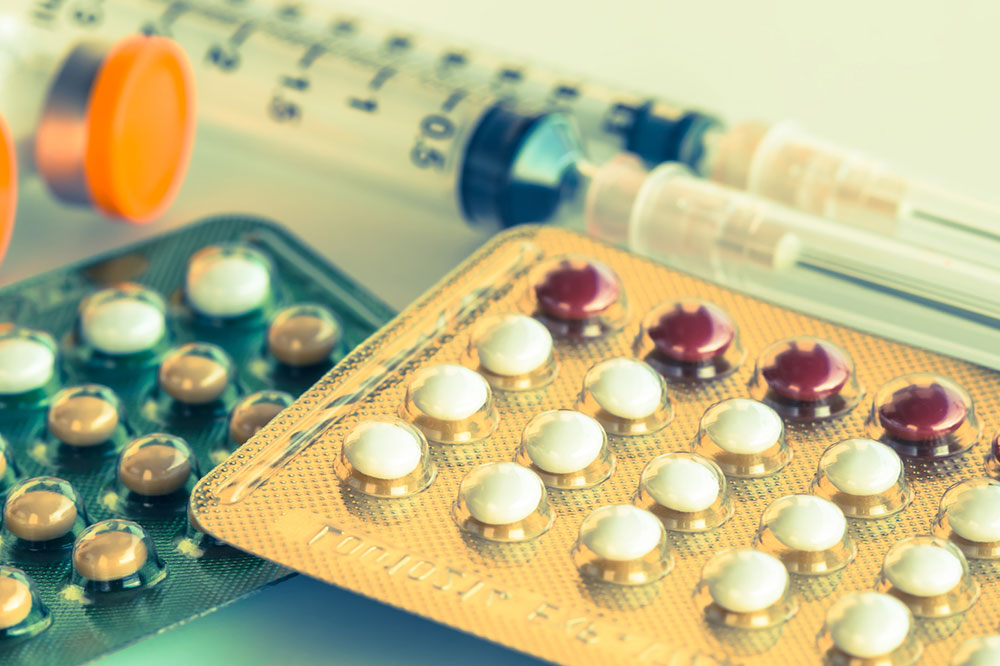
Top Effective Modes of Birth Control
Most methods of birth control are 99% effective or lesser, there has been no fool-proof method discovered yet. However, not all forms are safe for every woman, and it is imperative to visit a medical professional and get an idea of what might or might not work before opting for a procedure. If you are looking for effective modes of birth control, read on to learn about them. In descending order of effectiveness, they include:
Sterilization
Sterilization is of two types. Doctors perform a tubal ligation on women and vasectomy on men.
- Tubal ligation: Effectiveness is 99%
In women, the fallopian tubes carry the eggs from the ovaries into the uterus. When these tubes are blocked, cut, or tied in a surgical procedure called tubal ligation, the movement of the eggs into the uterus is interrupted. - Vasectomy: Effectiveness is 99%
Vasectomy is a simple surgical procedure in which the tubes that carry sperm from the scrotum to the penis are sealed or cut. Since sperm does not get into semen, fertilization of the egg does not occur.
Long-Acting Reversible Contraceptives (LARCs)
One of the most fool-proof methods of birth control women can opt for is long-acting reversible contraceptives or LARCs. The failure rate for LARCs is less than 1%. They include injections, sub-dermal implants, and intrauterine devices (IUDs). As the name suggests, this type of birth control is reversible. So when the woman decides to become pregnant, the devices need to be removed and injections need to be stopped for her to become fertile again.
Sub-dermal implants: Effectiveness is 99%
These are small flexible rods placed in the upper arm of women seeking contraception. These steadily release progesterone hormone into the bloodstream to prevent ovulation, and hence, pregnancy. It is the safest form of birth control to use for women who are breastfeeding or are unable to use estrogen-based methods. These are relatively inexpensive and effective for up to 5 years.
Intrauterine devices (IUDs): Effectiveness is 99%
IUDs are inserted into the uterus. These are tiny T-shaped devices available in two varieties: hormonal IUDs release progesterone, and copper IUDs release copper. Both prevent fertilization of the egg and implantation of a fertilized egg. These are long term contraception methods and last for anywhere between 3 and 10 years. Upon removal of these devices, women instantly become fertile. IUDs do not make women gain weight or increase the risk of cancer. These can be made use of even by breastfeeding women.
Birth control shots: Effectiveness is 94%
Birth control shots are another form of LARCs that works the same way as an implant. They steadily release progesterone hormone in the blood to prevent ovulation, and hence, pregnancy. The injections are useful, especially for women who cannot take estrogen. They hold good for approximately 12 weeks, but the visits to the doctor (for getting the injection) must be regular for this birth control method to be effective. After stopping the injection, it might take up to one year for the woman to become fertile again.
Contraceptive pills: Effectiveness is 91%
Contraceptive pills are the chemical composition of estrogen and progesterone, two hormones naturally produced by women’s ovaries. These hormones prevent pregnancy by stopping the release of eggs from the ovaries (ovulation). Also, they make the uterus’ lining thin so a fertilized egg cannot implant itself and grow. The contraceptive pill also thickens cervical mucus to prevent sperm from entering the uterus, thus averting a union between the sperm and the egg (fertilization). The two kinds available are combination pills and progestin-only pills.



